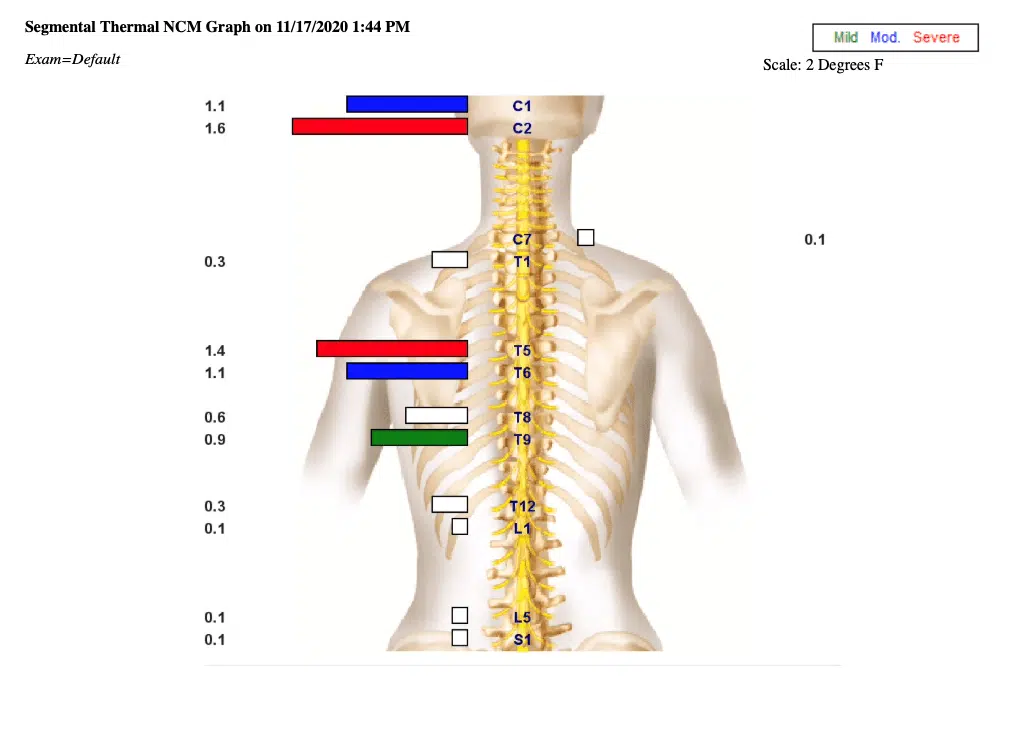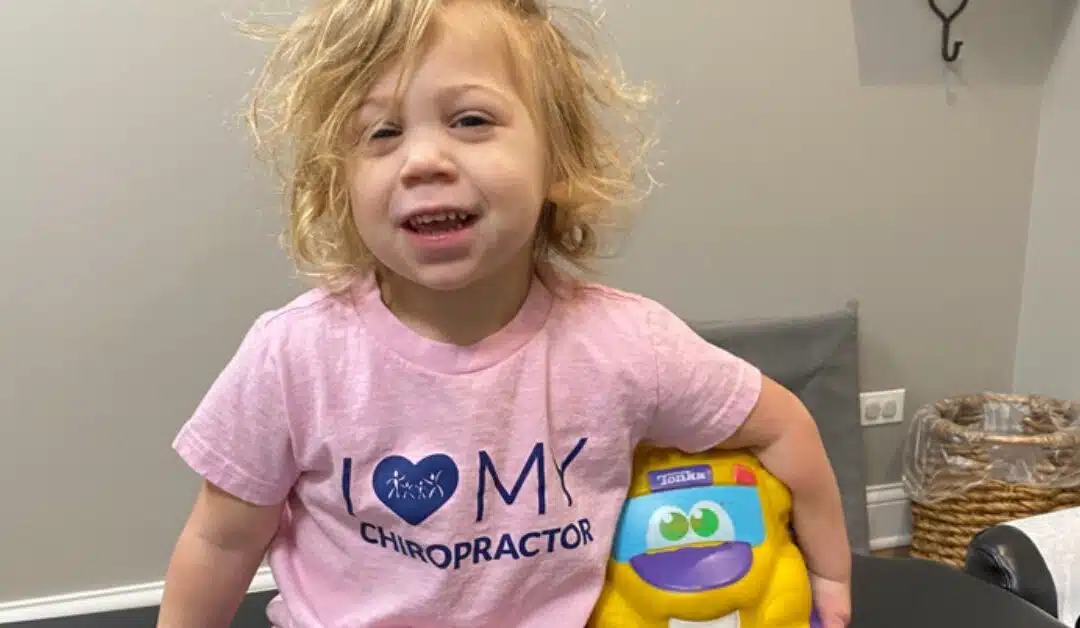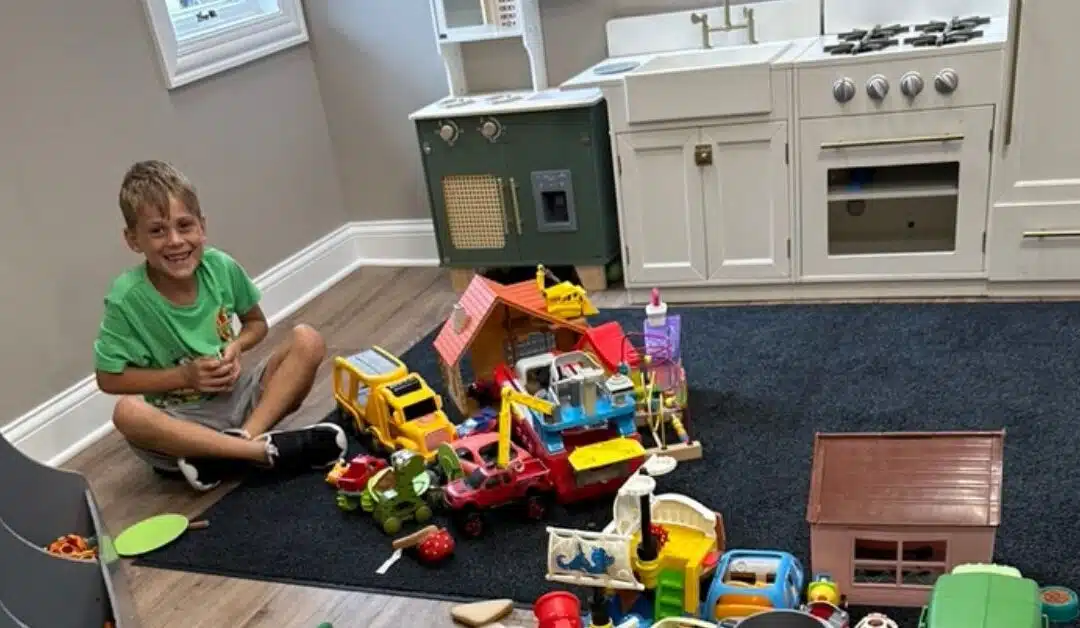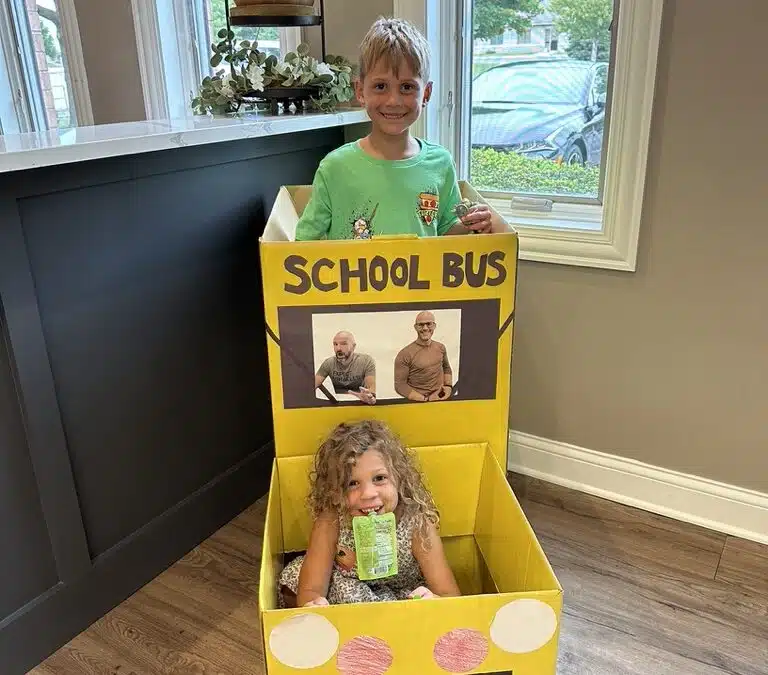The problem with constipation is that it’s a problem with multiple causative factors and one that leads to a multitude of other health challenges as well if left unresolved.
Recent studies put the incidence of constipation around 10% of kids in the United States, and it’s definitely on the rise and emerging as a major health problem now, millions and millions of parents battle each day.
The reasons for the rise give us our first clues as to what’s causing the increase in incidence – stress.
Or better yet, distress.
Kids are not meant to be stressed. They are meant to be happy, playful, joyful, and active. And starting out as infants, we all know they should do three (3) main things well in order to be healthy — Eat, Sleep, and Poop.
For the purpose of this article, we’ll add a 4th key element to the childhood health – movement.
Movement is absolutely essential to the health, brain development, and overall well-being of our kids. But we’re not just talking about the movement of our arms and legs, but specifically the moment of our digestive systems as well.
While the God-given design of our nervous systems, immune systems, and digestive systems is rather amazing when you dig deep into it — it’s also wildly simple and basic.
A child who eats well, sleeps well, poops well, and moves well is healthy. One who does not, is not.
Constipation is often found with a whole host of other health challenges in kids, some likely coming from and some caused by the same factors.
We often find that children with constipation also struggle with things such as:
- Ear, Sinus, and Upper Respiratory Infections
- Asthma & Allergies
- Eczema and Skin Issues
- Sensory, Focus, and Emotional Challenges
- Difficulty Sleeping
This is also why getting your child’s constipation cleared out of the way (literally) has so many positive and far-reaching benefits!
So let’s look at how to get that job done…
3 Main Causes of Constipation
After 13 years of clinical practice, we continue to find that kids struggling with constipation come from three (3) main categories:
- Nutritional & Food Intolerances
- Neurological Interferences
- Both Nutritional + Neurological
Here’s the wildest part of all this — while nearly 100% of patients we begin care with have tried a multitude of nutritional changes, supplements, essential oils, etc. — almost none of them have been told about how important the nervous system is when it comes to gut and digestive health.
So if you’ve never heard of that, read on – it’s awesomely simple to understand!
It takes us back to that word we started this helpful article with, stress.
While medicine blamed genetics and nutritionists blamed gluten and dairy, the truth is neither has changed significantly over the many past generations.
Our DNA is still virtually a match to our ancestors, and our grandparents certainly had bread and milk as a staple of their diet growing up too.
Now don’t get me wrong, things like cereal grains and cow’s milk have absolutely no place in a child’s diet and contribute to common childhood health issues like constipation, ear infections, and allergies — they are not the sole contributor.
We’ve got to look deeper and ask the question — why do kids today struggle so much with trying to digest these common foods?
The answer again is something all parents know all too well when it comes to their own health but forget to think about with their kids – stress.
Stress, or more accurately depicted as ‘distress’ when it’s overwhelming and too much… is truly at pandemic levels in today’s society, and kids are feeling it too.
Diving deeper, we now know that the neurological interference issues (called ‘subluxation’) are likely the actual precursor to the rise in food intolerances, leaky gut problems, and other commonly discussed holistic health issues.
So re-formatting our list of 3 things from above, it actually is better depicted in this way:
Neurological Stress & Interference
↓
Nutritional Intolerances & Gut Issues
↓
Constipation
The Wrong Starting Place for Constipation
Understanding the above sequence that contributes to constipation helps us see why so often, both traditional and functional medical approaches fall short. Pediatricians just keep throwing Miralax at the problem, with all of its known side effects… and then, in turn, diet changes and probiotics often fall short as well of getting the problem resolved.
Ultimately where so many families find the support and help they were looking for is in a place they wouldn’t always think to start – a Pediatric Chiropractic office.
Pediatric Chiropractic is a form of health care that has been around for 100+ years but is just becoming known in the public for its incredible benefits in helping restore the nervous system to a more relaxed, healthy, and balanced state.
The science behind it, especially concerning constipation and digestive issues, is super simple — an overstressed and overstimulated nervous system (subluxation) gets stuck on a perpetual, sustained fight-or-flight mode, known as the sympathetic side of the nervous system.
This sympathetic side of the nervous system is designed for protection and stressful situations, not for relaxation, sleep, ease, and digestion. When stimulated, this “gas pedal” side of the autonomic nervous works quickly to preserve resources for that “fight” or “flight” response, thus shutting down and limiting gut motility and function.
Limited motility = constipation.
This lack of digestive motility caused by sustained sympathetic stress also limits the body’s ability to assimilate and excrete toxins and unwanted molecules. This is where the reactions to gluten, dairy, and so forth come in.
These foods are already more difficult to digest by nature. Still, if you have a subluxated nervous system filled with inference and distress… it struggles to digest and eliminate even the most basic of foods and healthy foods alike.
This is where the ultimate frustration comes in for parents. You’ve thrown the book at this problem for your child, loading them up with Miralax, Pedialite, prune juice, and probiotics… yet the problem persists.
Find Out If Your Child is Stressed and Subluxated
Suppose your child went through any of the following common prenatal and childhood challenges. In that case, you absolutely will want to get them checked for this sympathetic stress and subluxation as soon as possible:
- Mental & Emotional Stress during the Pregnancy
- Birth Interventions such as Forceps, Vacuum Extraction, Manual Assistance, Induction, or C-Section Delivery
- Difficulty Latching, Nursing, and Breastfeeding
- Colic, Reflux, and Indigestion
- Ear Infections, Eczema, and Skin Irritations
- Frequent Antibiotic and Steroid Medication Use
These are all things we find to be contributors to not just constipation but the overall Perfect Storm pathway as well. One stressor leads to another, and one health challenge leads to another.
It’s likely your doctor or someone told you that your child will “grow out of it,” but the truth is, most kids “grow into” additional, lifelong challenges if not properly cared for.
Our PX Docs is a worldwide network of the most caring, compassionate, and comprehensive doctors on the planet. They will not dismiss your child’s constipation and health challenges as “normal” and sit idly, hoping they grow out of it.
Just like Juniper’s Story, you can find natural, neurological help for your child’s constipation with this action step as well!

That nerdy image above is of Juniper’s Segmental Thermal Scan performed in our office, PWC Chiropractic, outside of Chicago. Thermal Scanning technology is essential in helping Pediatric Chiropractors find, measure, and locate the subluxation and sympathetic stress in kids.
It’s a simple, 2-minute, non-invasive “stress” test of sorts that helps find which parts of the nervous system are truly stuck in sympathetic overdrive and thus not functioning the way they should be.
Juniper’s scan is pretty classic for digestive and sleep disturbances in infants because the blue and red bar at the top at C1/C2 indicate interference with the function of the Vagus Nerve. The Vagus Nerve is the most crucial nerve in the body, regulating the top 2/3 of digestive motility and much more.
Then from there, she also has a significant pattern of nerve interference in the middle region of her NeuroSpinal system, which controls the stomach and key elements of digestion. Specifically, this area is the “chopping and dicing up” section of the digestive system. When things are not properly broken down, they become that much harder to move through and out later on in the intestinal system.
Read More About the Vagus Nerve Here
Your local PX Doc can be found using our directory and will complete the most thorough Case History notes you’ve ever been through to start out. From there, they’ll perform cutting-edge “stress scans” for your child’s nervous system and find out if that sympathetic and subluxated state is a problem or not. And finally, they’ll lay out a step-by-step plan of action to get the stress off your child’s nervous system, helping to return them to a state of relaxation, ease, and gut motility!
For most cases, especially younger children, it doesn’t take long for the adjustments to kick in and have you saying, “Poop! There it is!” again and again!
We can’t wait to hear about all the blowouts and poop parties about to take over your life! It’s not always easy and fun to talk about, but seeing your child struggle is way less fun. Find and call your local PX Doc today, and get the relief your child needs right away!





